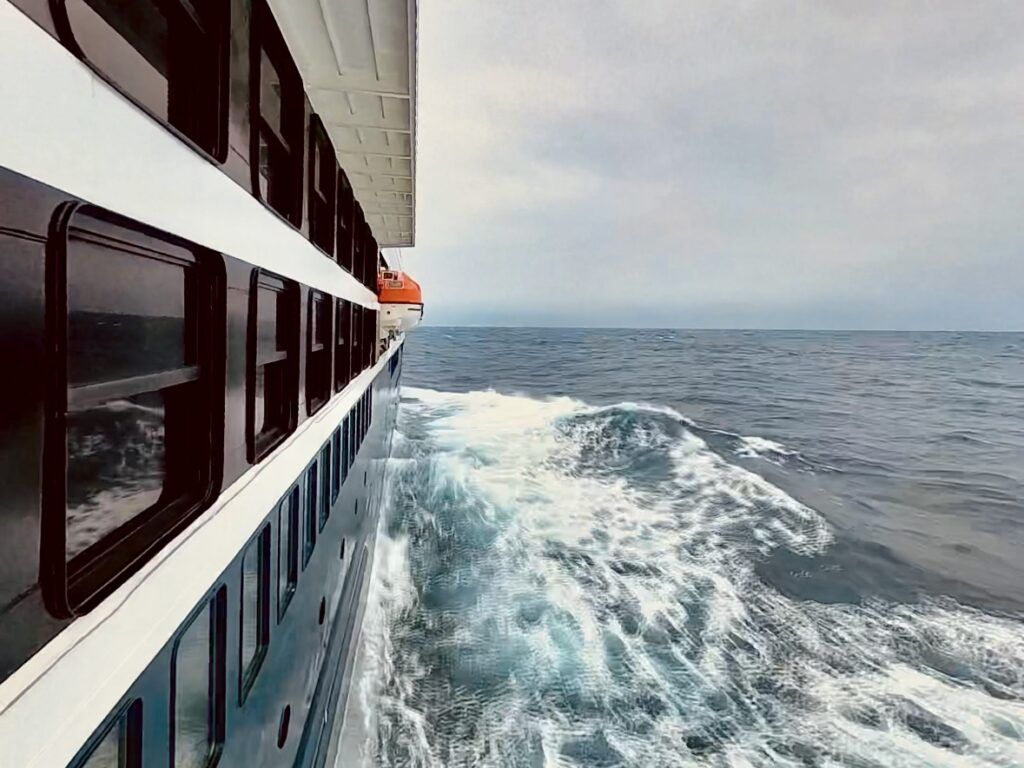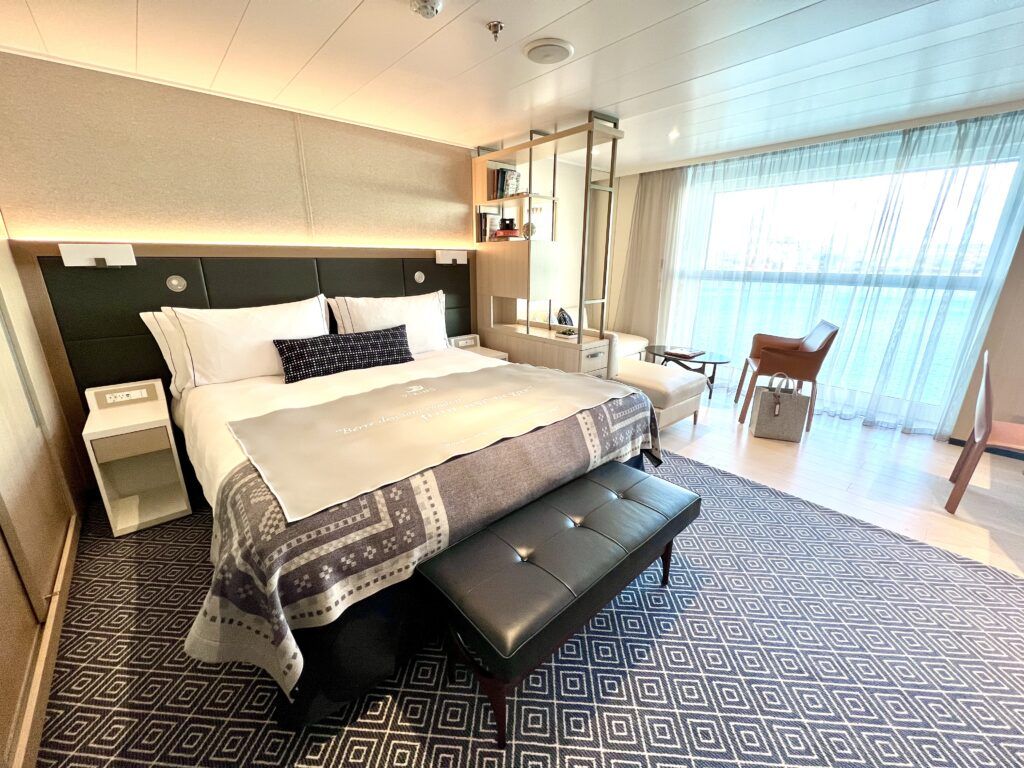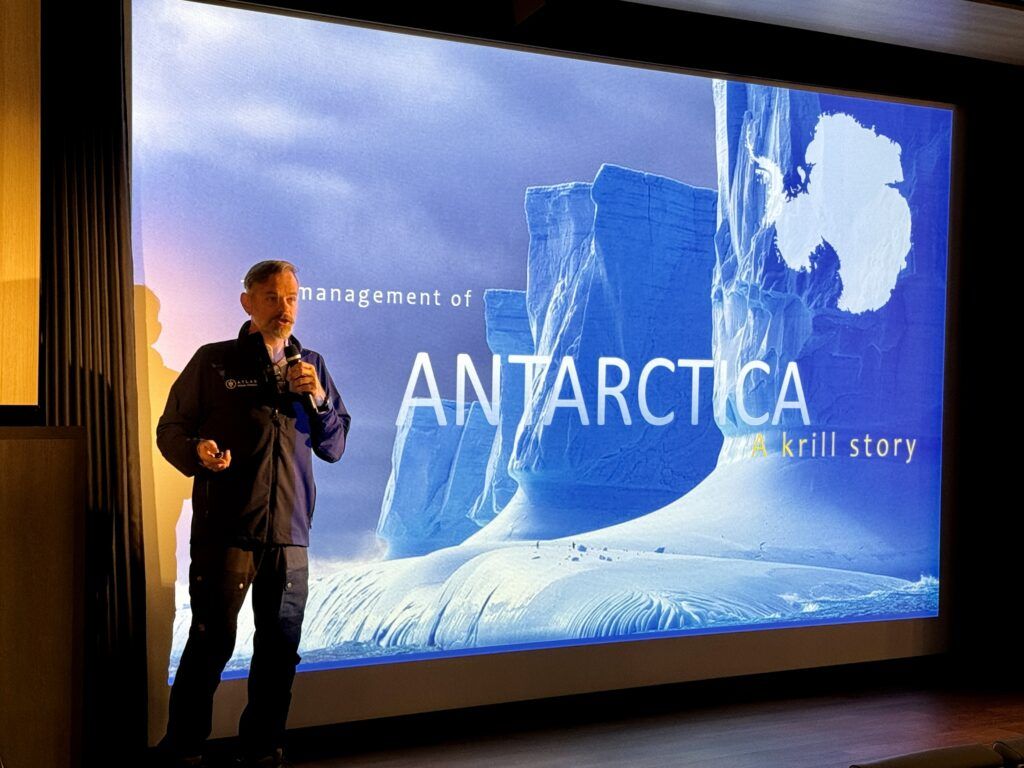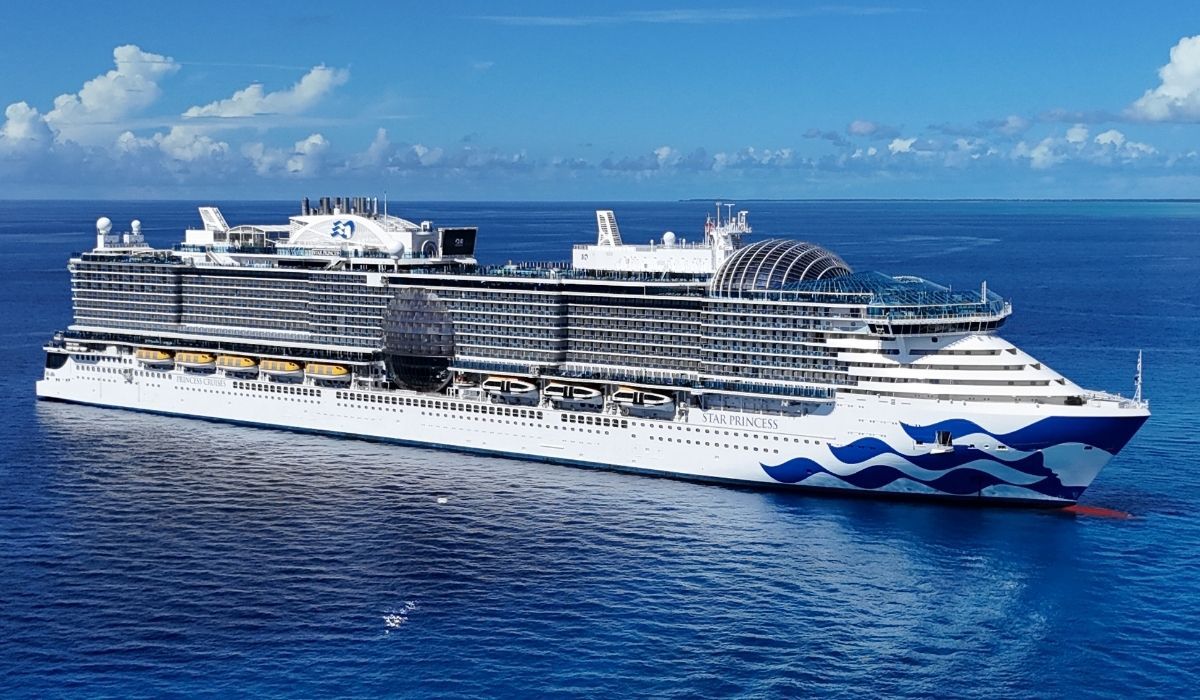Antarctica is a destination that many dream of visiting. With more and more cruise lines adding itineraries to this 7th Continent, it’s easier than you may think to check Antarctica off your bucket list. If you’re ready to take the (polar) plunge, we have some helpful tips as you prepare for your journey to the end of the world. Here’s what we wish we knew before cruising to Antarctica for the first time.
Call to Book Your Next Cruise Now: 1-855-228-5584!
Top 15 Tips You Need to Know Before Cruising to Antarctica
1. Choose the Right Cruise Line for You
As you begin to research cruises to Antarctica, you might be surprised at how many options you will uncover. Thus, it’s important to pick the right cruise line and cruise ship for you. Do you want a straight up expedition adventure? Are you okay with just scenic cruising the region? Would you prefer some traditional cruise elements while still enjoying expeditions ashore?
While mainstream cruise lines do cruise to the region, you may want to consider a smaller cruise ship when visiting Antarctica. These vessels are often better equipped to sail the icy waters and reach more remote destinations. Think ice breakers and polar class expedition ships.

The ships cruising to Antarctica run the gamut from adventure operators to luxury cruise lines. Below are several of the brands currently sailing the region.
- Abercrombie & Kent
- Atlas Ocean Voyages
- Aurora Expeditions
- Hapag-Lloyd Cruises
- Hurtigruten
- Lindblad Expeditions
- Ponant
- Poseidon Expeditions
- Quark Expeditions
- Scenic
- Seabourn
- Silversea
- Swan Hellenic
- Viking
We just returned from cruising to Antarctica on Atlas Ocean Voyages and loved it. As mostly mainstream cruisers, we thought it was the perfect combination of a traditional cruise experience with the ability to actually step foot on the continent without being too adventure-focused. When compared to other more luxury lines like Seabourn, Silversea, or Viking expedition vessels, these voyages with Atlas are also considerably less expensive.
Other mainstream cruise lines like Celebrity Cruises, Holland America Line, Norwegian Cruise Line, Oceania Cruises, and Princess Cruises do offer itineraries that visit Antarctica. However, they do NOT include shore landings.
2. Pick the Right Itinerary
If you are a cruiser, your favorite cruise line probably offers an itinerary that says it visits Antarctica. They are likely longer sailings that combine ports in South America, maybe even the Falkland Islands, with scenic cruising in Antarctica. Given the size of these cruise ships, passengers do have not any time ashore. You will ONLY see Antarctica on these larger cruise ship itineraries.
If you want to say you actually stepped foot on this 7th continent, then you will want to pick an itinerary on a smaller expedition-type cruise ship. The lengths of these itineraries do vary but many are between 9-14 days, with several longer options also available.

Another difference with Antarctic itineraries is the port of embarkation. Many cruising to Antarctica will depart from Ushuaia, Argentina, but that is not always the case. Some itineraries may depart from other South American cities like Buenos Aires (especially longer itineraries) or ports in Chile like Puerto Williams, Punta Arenas, or Santiago.
If departing from Ushuaia, check if the cruise line offers charter flights from Buenos Aires–many do, like Atlas Ocean Voyages.
Another option is to bypass sailing the Drake Passage completely. Some cruise lines offer fly-sail packages with flights from Punta Arenas, Chile to King George Island, the largest of the South Shetland Islands.
EXCLUSIVE SAVINGS: Get Deals on Your Antarctica Cruise Now!
3. Know The Best Time to Cruise to Antarctica
The Antarctica cruise season generally runs from November until March. With any seasonal destination, the shoulder seasons (early or late) have some benefits like lower prices and fewer crowds. However, the middle of the cruise season, or the peak season, will generally have the best weather and more wildlife sightings. Therefore, these months are more popular and usually more expensive.
The best time for cruising to Antarctica is generally considered December to February. During this time, there will be more daylight, warmer temperatures, and peak time for penguins and whales. Though, cruising in November does have some benefits too–like snow cover and sea ice that have yet to melt affording beautiful landscapes.

Just keep in mind that cruising early or late in the season does mean the weather might be more unpredictable. Cruising to Antarctica early in the season might mean that some landing sites are still inaccessible. Cruising late in the season means the land conditions are starting to degrade which might also impact your ability to get ashore.
Additionally, it will be colder, there could be rougher seas, and there might be more alterations to itineraries during shoulder season.
4. Consider an Expedition Ship
While we’ve already touched on this topic above with picking the right ship and right itinerary for you, we can’t stress enough that you should consider an expedition ship when cruising to Antarctica.
When most people think of expedition cruises, they think hikes and other strenuous adventure-type travel. This might make you shy away from picking one of these vessels, but in reality, it is definitely the best way to see Antarctica.
We are by no means outdoorsy or adventure travelers, yet we still had a great time. Being on a smaller ship allows for more time ashore. Who wants to travel all this way and not be able to get out and explore this majestic White Continent? Antarctica has strict regulations as to how many guests can go ashore at a time; thus, the fewer passengers on your ship means more time ashore for you.

While the level of adventure does vary by cruise line, picking something middle of the road like Atlas was a perfect fit for us. The ship had cruise staples like a main dining room, a bar and lounge, a spa and fitness center, a coffee shop, and well-appointed accommodations.
And our time ashore usually offered hikes of varying difficulty. This meant you could just walk along and admire the penguins and old whaling stations if you wanted. Or, you could hike to the summit (when deemed safe) to get a bird’s eye view of the area.
Brands like Viking will likely offer less strenuous ashore time, while Hurtigruten is known for its active adventures.
5. Know What Will You Actually See and Do
When we told our family and friends that we were taking our first cruise to Antarctica, they had the natural question: What is there to see and do there? You might be wondering the same thing. So, to clear things up, you will see lots of beautiful scenery–think snow, icebergs, sea ice, and other natural landscapes.
You will also see lots of birds, penguins, leopard and elephant seals, and possibly whales. The more common penguins are Gentoo and Chinstrap species, with Adelie and Emperor species found further south. The one animal you will NOT see is polar bears. While a common misconception, polar bears are not found in Antarctica but rather the Arctic. If you want to see polar bears, you’ll need to book an Arctic expedition instead, which are offered by many of the same cruise lines.


Antarctica cruises also do not offer your typical shore excursions. Most expedition cruise lines include zodiac safaris and shore landings in the price of the cruise fare. Zodiac rides can consist of scouting for wildlife or admiring the icebergs and glaciers. Shore landings will usually consist of taking a zodiac boat to shore, a wet landing, then some kind of walk or hike while ashore.
Additional limited capacity excursions might be available for purchase as well on your cruise. Atlas Ocean Voyages offers kayaking, paddle boarding, and camping for an up-charge.
Once again, everything here is highly regulated. Thus, all cruise lines need to follow strict rules put forth by the International Association of Antarctic Tour Operators (IAATO), which promotes environmentally responsible travel. So, you will need to abide by these rules when going ashore and the expedition team will make sure of this.
6. Be Mindful of Your Medical Conditions Before Booking
So, you’re considering a journey to the end of the world? That’s great, but remember– it’s just that. Cruisers should definitely be mindful of their medical conditions and physical health before cruising to Antarctica. Being in such a remote destination means there will be limited access to medical facilities should an incident arise.
If you have any chronic conditions, it’s advised that you consult your healthcare provider first. The medical team onboard the ship can deal with minor illnesses and injuries but not serious medical events. You will need to be evacuated to a hospital in Argentina or Chile. Some cruise lines may actually require you to have medical evacuation insurance or some might include it in the cruise fare.
It’s also important to note that most expedition cruise ships have limited accessibility. If you have any concerns, be sure to check out the ship’s deck plans to see if accessible cabins and/or elevators exist. Also, inquire about wheelchairs and/or scooters as there’s a chance the ship might not be able to accommodate them.
Boarding the ship and boarding zodiacs also present other issues for those with limited mobility. The gangway is often steep metal stairs. You will typically also need to descend stairs and climb into zodiac boats with limited assistance from the staff in order to leave the ship in any Antarctic port.

7. Be Prepared for Rough Seas
Almost a rite of passage for cruising to Antarctica is crossing the Drake Passage, which is notorious for having some of the roughest seas in the world. This body of water, located between South America’s Cape Horn and the South Shetland Islands, meets no resistance from any land masses. Thus, waves over 10 meters are not uncommon.
With two days of cruising this Passage towards Antarctica and two days on the return trip to Ushuaia, this voyage is admittedly not for everyone. While we are not prone to motion sickness, even we were unsure what to expect. Thankfully, we did not have any symptoms of seasickness, but plenty of the crew and passengers did.
It’s really a roll of the dice if you will experience the “Drake Lake” or the “Drake Shake” on your sailing, so it’s important to be prepared. There are a variety of remedies for seasickness, ranging from green apples and ginger, to Sea-Bands, to over-the-counter meds and prescription meds.
You should contact your doctor and discuss which options are appropriate for you and pack them just in case.
Even if you don’t experience motion sickness, it may still be challenging to walk a straight line or get up and down the stairs if the seas are rough. This is just something else to keep in mind if you have any troubles with balance.
It’s also important to note if the seas are that rough, the outdoor areas will likely be closed, so you’ll be spending much time indoors with limited access to fresh air. This is where your cabin choice is important. Lines like Atlas (Horizon staterooms) and Viking (Nordic balconies) offer “infinite veranda”-type balconies which we find ideal in this region.

8. Be Realistic of Your Own Fitness Levels
As you have probably figured out by now, cruising to Antarctica is all about exploration. Whether you are scenic cruising past the majestic landscapes or actually get to go ashore, it really is “otherworldly”.
With that being said, you should be realistic of your fitness levels if participating in shore landings. You will likely be traversing sandy, muddy, snowy, and icy surfaces. You will likely also need to complete wet landings, meaning you will need to wade through shallow water to get from the zodiac boat to the shore.
During land excursions, you will need to walk/hike over this uneven terrain, so proper footwear and walking sticks are recommended. Many cruise lines do provide these, but some require you to rent them or bring your own.
Don’t worry though, you don’t need to be a polar explorer to still experience Antarctica. Often times, the expedition team will map out different paths with varying levels of difficulty, so you can avoid those steeper, more rugged climbs if you’re like me. And there’s also plenty of expedition team members on hand to guide you in your explorations, answer questions, and take photos along the way.


9. Plan for More Time on the Ship Than a Typical Cruise
Given that cruise lines need to follow specific regulations in Antarctica, guests are limited to how much time they can spend ashore. During our Atlas cruise on World Voyager, our scheduled zodiac rides were around 60 minutes and shore landings were around 90 minutes to allow everyone onboard the same experience.
In ideal weather conditions, there are two outings a day. This means that at most you are exploring for three hours a day (other cruise lines may differ). Not to mention, it takes about two days each way to cruise through the Drake Passage. If you read between the lines, this means there’s a lot of down time on the ship.
While mainstream cruise lines feature a host of amenities and activities, expedition vessels do not have as many offerings. There won’t be a plethora of bars and lounges, a casino, production shows in the main theater, or your typical sea day happenings. There might be some live music in the evenings or trivia sessions here and there, but otherwise, you’ll need to make your own fun. We suggest bringing books, cards, or some small games to keep yourself occupied.
BOOK NOW: Get Exclusive Savings on Your Cruise to Antarctica!
10. Cruises to Antarctica Are More Enrichment-Focused
While cruises to Antarctica won’t feature Broadway entertainment or silent discos, they do have plenty of enrichment focused activities for the more curious travelers. From talks about the history and geography of Antarctica, to its geopolitical underpinnings and the Antarctic Treaty, to discussions on penguins, whales, and birds, the expedition team will host several lectures throughout your voyage.
Your cruise line will likely also have daily briefings where the expedition team will review the day’s events and prep for the anticipated activities of the following day.


Some cruise lines have a more scientific focus with educational presentations from onboard researchers and experts. Viking even has an onboard science lab where guests can participate in some of the ongoing research.
While the onboard activities might be different than a typical cruise experience, these enrichment activities will help to provide a greater connection and understanding of this magnificent destination.
11. Don’t Over Pack
Coming from us, self-confessed over-packers, this means a lot. But, we will admit that we definitely over-packed for this cruise to Antarctica. While the weather is cold, it’s not as cold as we expected–at least for us New Englanders.
Like Alaska cruises, layers are essential. Though, you may want to invest in some warmer wool base layers. You will most definitely need waterproof pants as well, like rain or ski pants. The wind is what makes Antarctica feel colder even though the temperature hovered around 30 degrees Fahrenheit most of our trip. Thus, make sure to pack gloves, hats, and gaiters or scarves.
Before you make the mistake of over-packing, be sure to know what your cruise line provides. Most provide parkas, so you can leave the heavy coats at home. A lighter weight, packable puffer coat might still be beneficial for going outside while on the ship. If you tend to get cold, you may want to pack a fleece jacket or sweatshirt as a middle layer as well.


Additionally, you’ll need tall, waterproof boots for shore landings. However, your cruise line MIGHT provide them for you allowing you to leave the heavy footwear at home. Another beneficial item is walking sticks. But once again, check if they are provided by your cruise line before packing your own.
Further, keep in mind that there is a lot of time on the ship, and the temperature is climate-controlled. While we packed sweaters and sweatshirts for each day of our trip, we didn’t end of wearing half of them. Some passengers even walked around the ship in shorts and sandals during the day.
Finally, when it comes to evening attire, these cruises are more casual. If you like to dress up for dinner, you can pack a few dressier outfits but can leave the formal wear at home for most cruise lines.
Even though you are cruising to Antarctica, items such as sunglasses, sunscreen, and lip balm are essentials as well. We also recommend packing a waterproof bag and water bottle if your cruise line does not provide them for you. Also, pack a bathing suit if you plan to take the polar plunge or use the sauna and hot tubs on the ship.
12. Prepare Your Cabin for the Adventure
There are also some items that we always pack for a cruise that help us keep our cabin in order. First and foremost are magnetic hooks. Since the walls of a cruise ship are magnetic, you can use these hooks for extra storage. We always use them to hang items like bags and jackets. However, they were even more helpful this trip to dry clothing after a day ashore.
We also pack an over-the-door shoe organizer to store smaller items. This can include toiletries, gloves and hats, small electronics, tech chargers, meds, and more. This will help free up closet and drawer space to store actual clothing and bulkier accessories.

If you’ve never used packing cubes before, we highly recommend them. They can help keep your clothing organized and make packing and unpacking a breeze. After unpacking, store your luggage under the bed so it’s out of the way for the duration of the trip.
Some other items you may want to consider packing are a laundry bag to stow away dirty laundry, portable chargers to keep you powered up during your time ashore, and clips to ensure your window curtains stay shut if you are sensitive to light while trying to sleep.
13. WiFi Might Be Better Than You Think
We did not know what to expect when it came to WiFi while cruising to Antarctica. Would the end of the world actually have connectivity? We were pleasantly surprised that it did, and it worked quite well on Atlas Ocean Voyages. Now, this will vary greatly by cruise line, but if your cruise ship advertises Starlink, you can count on having some connectivity.
We were able to check email, use some social media platforms like Instagram and Facebook, and even make a few Teams meetings. Video streaming and video-based platforms like YouTube or TikTok probably won’t work though. If you need to stay in touch with family back home, consider using WhatsApp. This worked much better for us during the trip than iMessage or Facebook Messenger.
While the WiFi did work surprisingly well, it might come at a price. If you plan to use this service, make sure you know the cost for your cruise line. Currently, Atlas offers 1 GB of free WiFi but additional GBs are pretty expensive.
Most importantly, whether you plan to use WiFi or not, make sure your phone is in airplane mode. You can still use the ship’s WiFi service with your phone in airplane mode and will avoid roaming charges.

14. The Polar Plunge…Enough Said!
Did you really go to Antarctica if you didn’t do the polar plunge? For those brave enough to take a dip in the frigid waters, most cruise lines sailing the region will offer a polar plunge. Of course, this activity is weather-dependent and may not happen on all sailings.
Basically, you’ll don a bathing suit and bathrobe then head to the designated area on your ship, like the mudroom or similar space. From here, the staff will tether you in and instruct you on the process. In our experience, it is over so quickly that you barely realize how cold it actually is. Don’s countdown, jump into the water, and climb back up the ladder was roughly 30 seconds.
There are plenty of staff on hand, and you are attched to a safety line just in case anything happens during the process. More than 60% of passengers on our sailing completed this rite of passage without incident, but I was not one of them. I decided to stay warm and take pictures and videos instead!
In case you are wondering, the water temperature during our sailing was about 30′ F, and there’s a shot with your name on it to warm you up upon return.
15. Be Flexible
As you’ve probably gathered by now, a trip to Antarctica is a once-in-a-lifetime experience. But, venturing to this polar region can be very unpredictable. Weather can change in an instance, which we experienced several times during our trip.
So, the MOST IMPORTANT tip is to be flexible. Your excursion times might get changed. Your itinerary might be altered. You may miss planned port stops. Your highly anticipated camping or kayaking tour may be cancelled. There might be pleasant weather one minute and snow and wind the next. You might have a calm Drake crossing or swells of 30 feet. You get the point.
When cruising to Antarctica, you have to play by the rules of Mother Nature. Instead of complaining or getting upset, just take a step back and enjoy the surroundings. Remember, you are one of the lucky few who can say they’ve actually experienced this polar region.
So, buckle up and enjoy the ride!
Comments
Did you find our tips for cruising to Antarctica helpful? Do you have any other advice to give those taking their first cruise to Antarctica? Drop us an anchor below to share your Antarctica cruise experiences.















2 comments
Raj
Hi, Did you book your cruise directly at the Atlas Cruise website or used a travel agent? If you used a travel agment, would you mind sharing the travel agent name and website? Thanks Raj